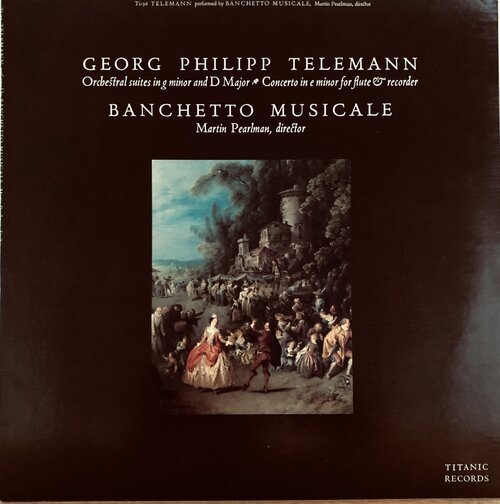Ouverture in D Major, TWV 55:D21
For 2 horns, 2 oboes, strings, and continuo
Ouverture
Plainte
Réjouissance
Carillon
Tintamare
Loure
Menuets I & II
Program Notes by Martin Pearlman
This Ouverture in D is one of Telemann's very late works and among the last examples of the Baroque suite. It bears the date 1765, at which time the style of the eighty-four-year-old composer was already somewhat anachronistic. We have only to consider that, in the same year, the child Mozart was in London writing some of his early symphonies and concertos and that Haydn had already written nearly thirty symphonies and numerous string quartets.
The Ouverture is dedicated to Count Ludwig VIII of Hessen-Darmstadt, a hunting enthusiast. Appropriately, the score calls for two hunting horns and gives them prominent roles in certain movements. The first movement, the Ouverture, is in the typical French overture form, with strong dotted rhythms in the opening section and a more lively second section. The lament of the Plainte has a melody in the low range for the rich combination of violins and oboes. By contrast, there follows the more celebratory Réjouissance and then the Carillon with its bell-like notes in the bass supporting a melody in the oboes. The Tintamare is fiddle music, the title referring to the French "tintamarre," meaning uproar or din. The suite ends with two gentler dance movements, the Loure and a pair of Menuets.
Boston Baroque Performances
Ouverture in D Major, TWV 55:D21
November 4, 1977
Paine Hall, Harvard University, Cambridge, MA
Martin Pearlman, conductor
Included on LP recording, 1978.
Out of print.

